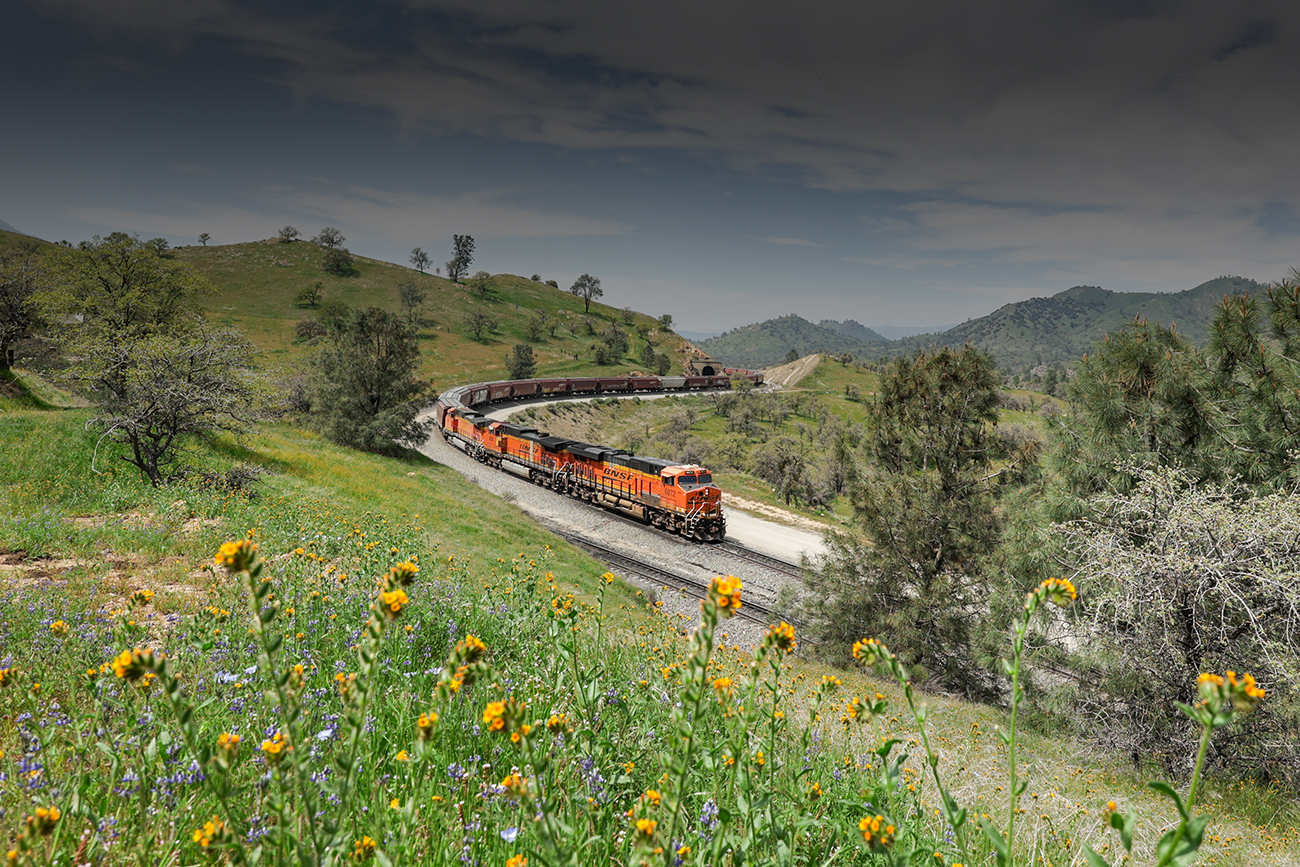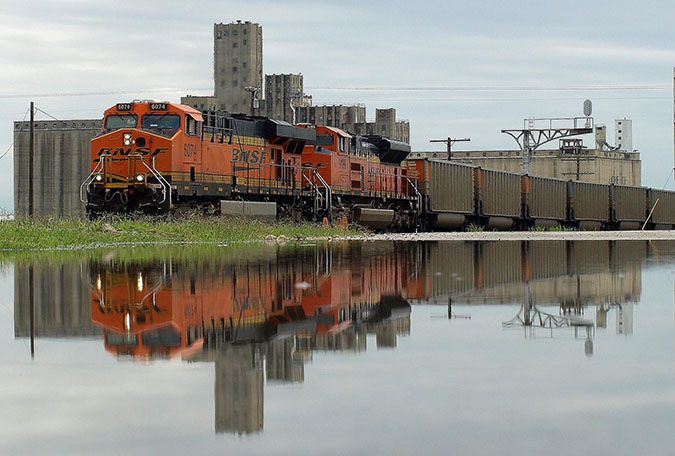
Meet Kurt Haubrich: BNSF railfan, retired railroader, activist
By JEREMIAH VALENTINE
Staff Writer
Kurt Haubrich has been a dedicated railfan for as long as he can remember. From biking the Illinois Prairie Path (one of the first rail-to-trail projects) and chasing trains in his younger years to now advocating for rail-related nonprofits, he’s had a passion for railroading all his life.
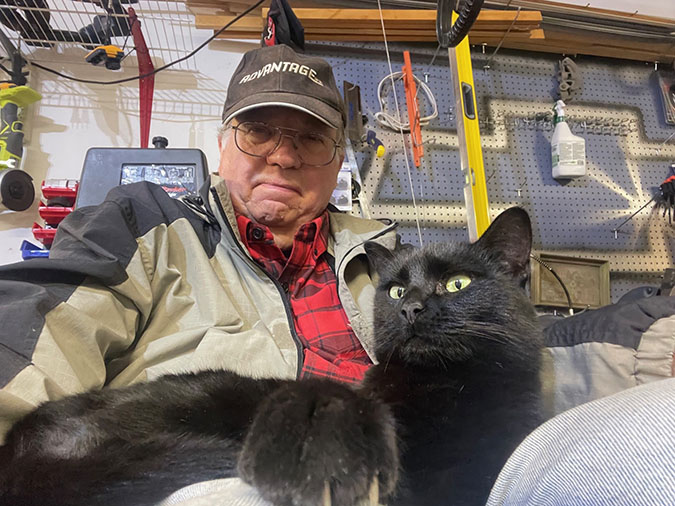
In his youth, Haubrich remembers train rides to Kenosha, Milwaukee, and St. Cloud, Minnesota, from Chicago. He vividly recalls the copy of Model Railroader magazine his stepfather brought home that engrossed him in all things trains.
In 1970, at the age of 16, he read a special Sunday paper insert about a new railroad that had formed through a merger of multiple railroads – Chicago, Burlington & Quincy (CB&Q); Great Northern Railway (GN); Northern Pacific Railway (NP); and Spokane, Portland & Seattle (SP&S). He was fascinated by the newly formed Burlington Northern (BN) railroad, a BNSF predecessor.
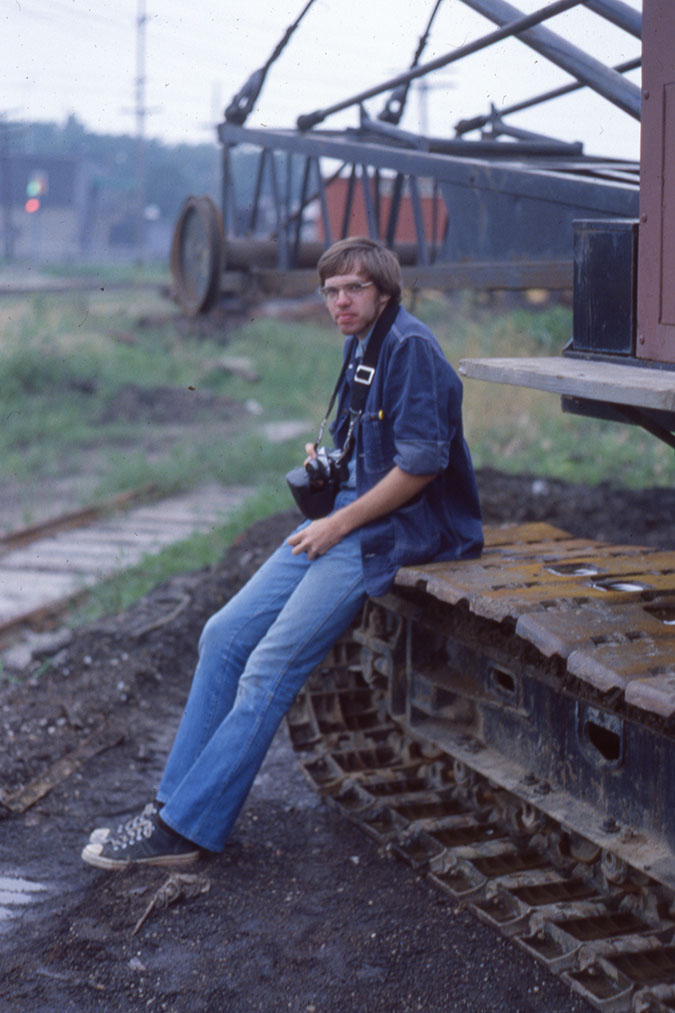
Shortly after commandeering a 35mm camera from his stepfather, Haubrich’s love for photographing trains was hatched. Living in Downers Grove, Illinois, he snapped photos of trains passing on the triple track at Main Street station.
In 1973, Haubrich found himself at a summer dream job: a role with BN. He began his 38-year railroading career as a laborer on surfacing gang. After graduating college, he moved to a role in the technology department in 1978.
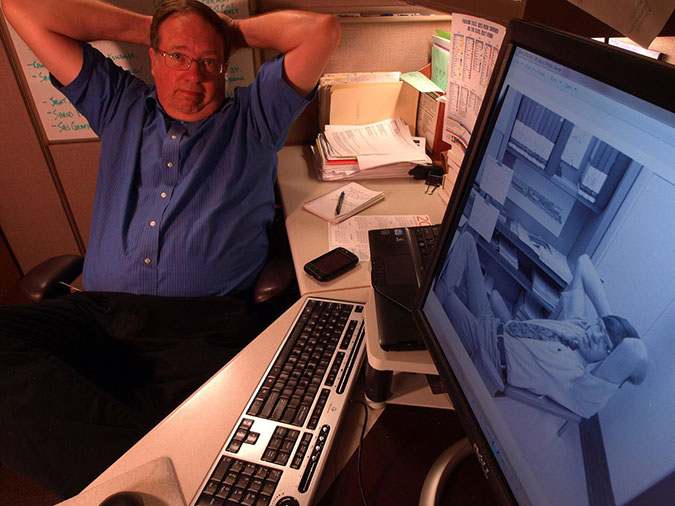
Haubrich reminisces about the old ways of laying tracks and maintaining railroad infrastructure. The conditions were often challenging, but the camaraderie with his fellow railroaders made the work enjoyable. His favorite part was connecting with fellow multigenerational railroaders and listening to the history of the railroad.
In 1988, he transitioned to a role at BN’s office in St. Paul, and for most of his career, he worked in the cost and profitability department. Later he moved with the company to Fort Worth, Texas.

In 2000, Haubrich co-published a book documenting the history of the Minnesota and International Railway. The book focused on employees’ memories, documents and press articles about the North Central Minnesota logging railroad line, which he worked on during his BN years. Now, the rail line has been turned into a walking and cycling path.
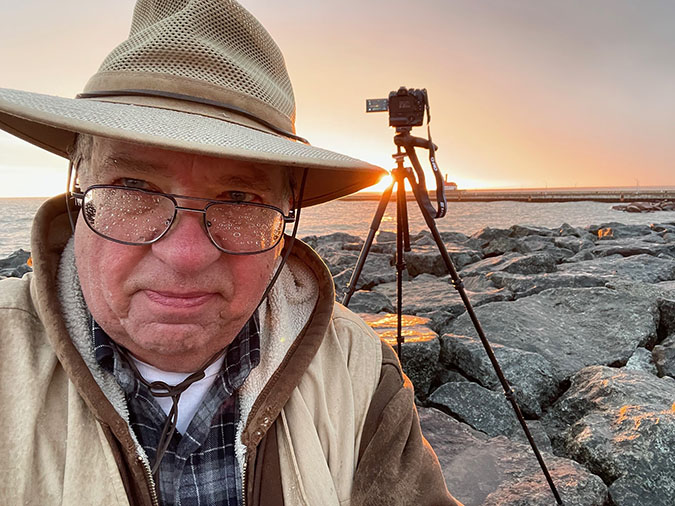
In retirement, Haubrich continues to be involved in railroading, volunteering with two nonprofits. He serves with All Aboard Minnesota, which educates the public on the benefits of passenger rail service. He’s also a director of the American Passenger Train History Museum in Charles City, Iowa, where a team restores passenger rail cars.
Even in retirement, Haubrich still admires the coordination it takes for the railroad to meet shippers’ expectations on a 24/7 schedule. He compares the train operation to a bakery, where all the work happens behind the scenes.
“You show up at daybreak, and there are all these rolls and donuts,” he said. “But all the baking has been going on since 2 a.m.”
